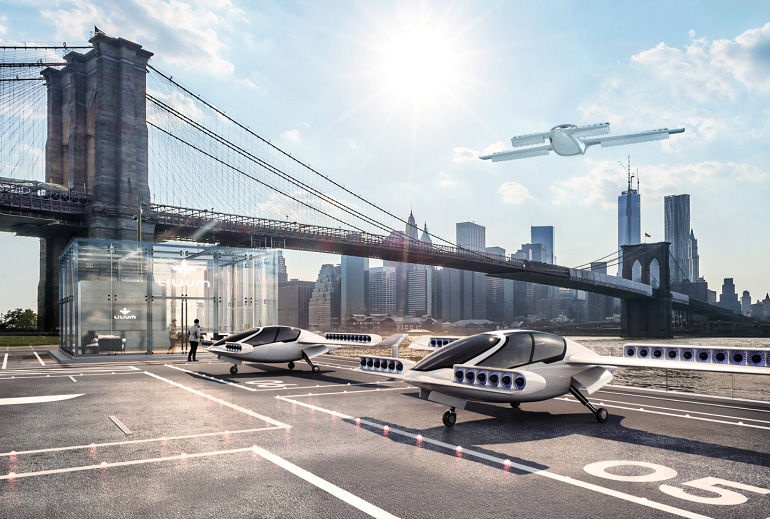Lilium Making Flying Cars A Reality
- AC

- Jun 29, 2018
- 3 min read
Updated: Oct 21, 2019
| A + T |

At first glance, you wouldn't think the Lilium Jet could fly. It looks more like an Apple Magic mouse than any aircraft you've come across, and its 36 small propellers run on electricity, not jet fuel. But this hip airplane just proved it can take to the sky, and it might be the flying car you've been waiting for.
The ‘Jet’ (which isn't really a jet), can take off and land vertically like a helicopter and fly like an airplane, making it just the thing for jammed cities because it doesn't need a runway. In other words, it's everything you want in a flying car: It picks you up at any given location and plunks you down exactly where you want to go.
A full-size prototype of the airplane made its initial voyage on an airfield near Munich earlier this year. It lasted just a few minutes, with no one in either of the two seats, and a pilot controlling it from the ground. But it flew, proving that the unconventional design isn't total nonsense.

"The basic challenges are solved," Lilium CEO Daniel Wiegand expressed WIRED in an exclusive interview. Now comes several years of flight testing before moving into serial production. The German start-up has backing from the European Space Agency and millions in funding, which will help Wiegand meet his goal of tripling his staff to about 135 people.
However, Lilium has a long way to go before a weird electric plane with a big battery, three dozen propellers, and room for five passengers carries anyone anywhere. Let alone 190 miles at 190 mph, as Wiegand envisions.
"I'd say that's impossible off the top of my head," says Richard Pat Anderson, who runs the Flight Research Center at Embry-Riddle Aeronautical University and is developing his own vertical takeoff and landing aircraft. "They're definitely exceeding some fundamental math."
Despite advancements in battery tech, Elon Musk believes they've reached the point where they can power an 18-wheeler jet fuel still stores far more energy per pound, a key consideration in an industry where weight trumps just about everything. Until now, Airbus has succeeded in squeezing 60 miles and 137 mph from the 350-pound battery in its experimental two-seater eFan.
The faster and farther one desires to fly, the bigger a battery one requires. Eventually, one would hit a point where the added mass outweighs the benefits of more kilowatt-hours; which is why Airbus decided to try a serial hybrid approach instead and Anderson's team started there. Serial hybrid aircraft use a fuel-burning generator to recharge the batteries while flying, which makes them more or less like a flying Chevrolet Volt.

Nevertheless, let's suppose Lilium makes this happen, even if it doesn't quite deliver the specs Wiegand proposes. Building its wild electric plan leads to the Uber-type air taxi service Wiegand envisions. That could work, if his start-up solves a few other challenges. The first is figuring out how to certify an entirely new kind of aircraft (Europe will be easier than the US, which doesn't even have any way to regulate electric planes), set up the necessary landing and takeoff infrastructure, and ensure air traffic control can handle an invasion of aircraft flying a few hundred feet above city streets.
Let's imagine Lilium solves all these challenges. Then, it gets to bout the competition. Advances in battery tech and electronic flight controls, paired with the success of car-based ride sharing services, have a few start-ups chasing the same dream. China's EHang wants to launch its passenger carrying drone in Dubai sometime this summer. Aeromobil in Slovakia and Terrafugia in Massachusetts have their own take on flying cars. Joby Aviation wants to launch an electric flying taxi service within five years.
If Lilium's going to win customers away from all their opponents; offering the right balance of speed, range, and cost becomes vital. Needless to say, the first flight is definitely a positive leap. Let’s just hope this cool flying car takes off sooner than later.
Tags: Autonomous Technology
















Comments